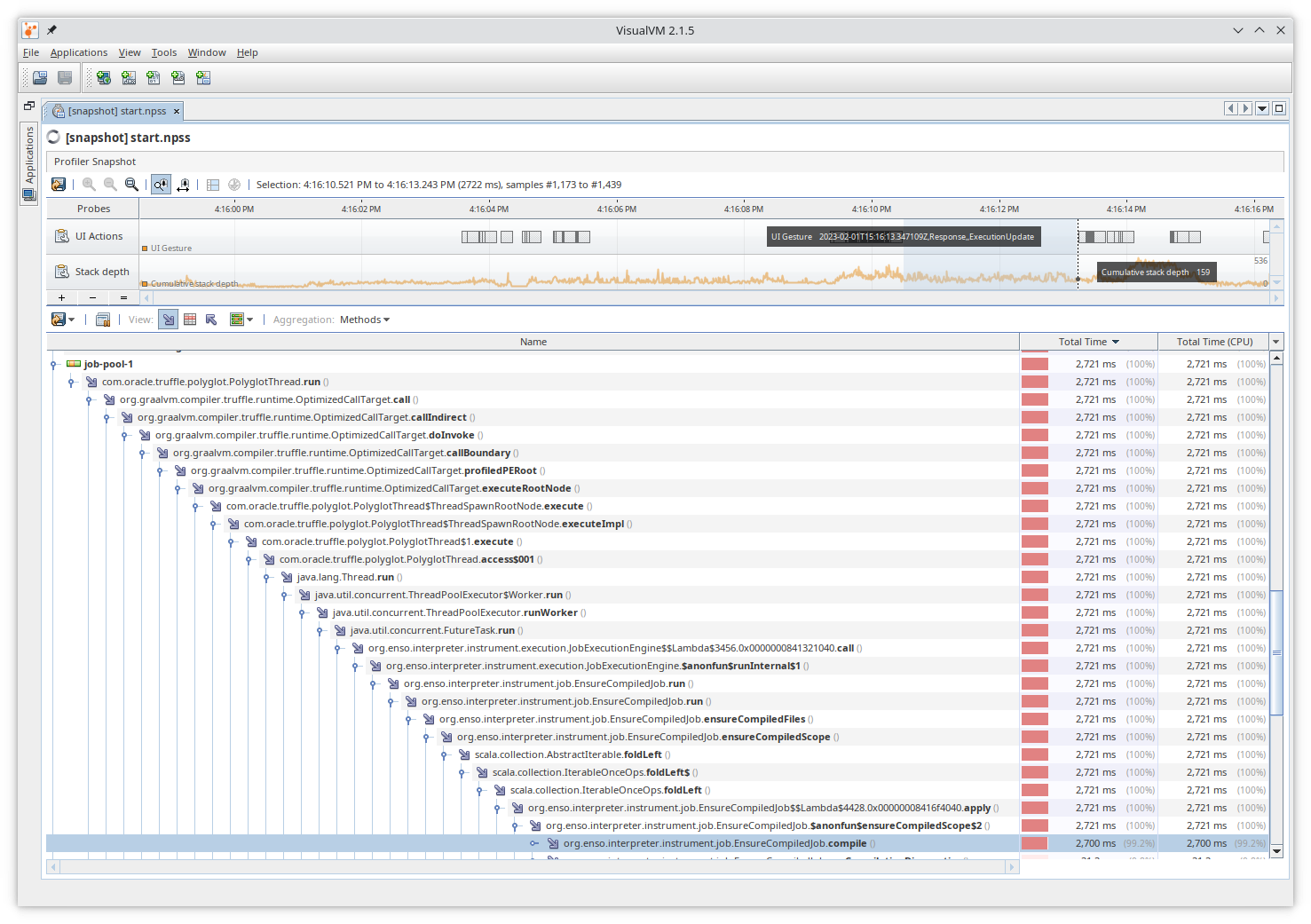Changelog: - update: always create an event log next to the profiling file when the engine is started with the `--profiling-path` flag - remove: `--profiling-events-log-path` flag
2.0 KiB
Summary
One of the main objectives to deliver satisfactory user experience when using Enso is to be fast when getting ready to work. This requires the engine to initialize all services the IDE needs in proper order and to make sure the essential ones are ready as quickly as possible. In short - to start fast. This document describes how to measure, record and analyze the startup of the Enso engine.
Collecting the data
Via the Project Manager
Start project-manager with following options to record first 20s of the Enso
engine startup sequence:
$ project-manager --profiling-path=start.npss --profiling-time=20
Let the IDE connect to just launched project-manager - e.g. start the IDE with
--no-backed option. Once the start.log and start.npss files are generated
(next to each other), open them in GraalVM's VisualVM:
$ graalvm/bin/jvisualvm --openfile start.npss
Use VisualVM to analyze to recorded data.
Via the runner
Runner executable also supports the profiling with the --profiling-path
option. For example, you can run the Enso project with the profiling enabled:
$ enso --profiling-path=/tmp/run.npss --run ~/enso/project/New_Project_1
And then open it in the VisualVM:
$ visualvm --openfile /tmp/run.npss
Interactively Analyze
VisualVM offers two timelines. A "stackdepth" one and also "UI Actions" line.
Hovering over boxes in "UI Actions" shows the messages describing what happens
in the engine - what has been logged into start.log. One can then select an
interval and get profiling information for that interval:
This picture shows that 2.7s is spend in EnsoCompiledJob task. Overall the
goal is to log enough information to help us navigate thru the long startup
sequence. Select appropriate interval based on the displayed UI Actions - e.g.
logged events - and analyze what has happened there based on the sampling of JVM
stack traces.
